
|
Length of Objective Barrels of Binoculars or Telescopes . Länge der Röhre von Fernglas. Longueur du Tube de Jumelles. Длина трубы бинокли. 双眼鏡 の管の長さ Längden på Röret Kikare. Longitud del tubo de Prismáticos. Lunghezza di Barili Obiettivi di Binocoli o Telescopi. |
|
Miniature Binoculars with Sports Organization Endorsement. Miniatur-Ferngläser mit Sport Endorsement. Jumelles Miniatures avec Endossement Sport. Миниатюрные бинокли со спортивным одобрения. スポーツエンドースメント付きミニチュア双眼鏡. Miniatyr Kikare med Sports Endorsement. Prismáticos en Miniatura con Aval Deportes. Binocolo in Miniatura con L’approvazione Dell’organizzazione Sportiva. |

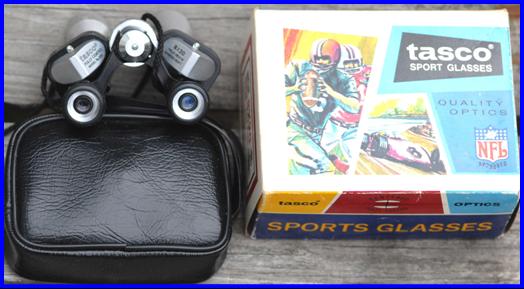
|
Companies distributing and selling consumer products have long known that the obsessive self association of fans with their chosen sports organizations can be exploited quite effectively by licensed affiliation. Around 1971 Tasco Sales licensed an NFL (US National Football League) “approved” endorsement for their binoculars. The boxes were marked with the NFL logo and “approved” marking. The binoculars themselves were normal models without any special markings, so the consumer sports fans really didn’t get much that was special other than a pasteboard box. In fact the 12 x 40 # 505 ringsider model pictured above left and sold with the NFL endorsement were actually Tasco’s German and European model binoculars that were not really intended for the US market, complete with their German markings. But perhaps the sports fans thought “ VOLL VERGOTET” mean “Go Team” and “WEITWINKEL” meant “Quarterback Special?’ Actually, it is likely Tasco Sales saw it as a perfect opportunity to sell slow moving stock from one market in another market with that NFL endorsement and if the NFL saw the “VOLL VERGOTET” marking they just assumed the deal was “fully coated” in extra profits for them. |

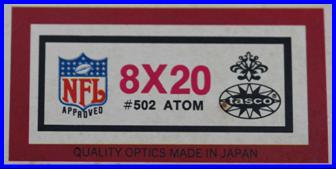

|
Tasco NFL licensed 12x40 binoculars Collection of Mark Ohno |




|
Japanese External Reverse Porro Prism Binoculars. WEBSITE MUSEUM |
|
Even the most casual observer of binoculars will have noticed the wide variation in the overall length of binoculars. The design of binoculars always involves an interaction between prism arrangement and distance between lenses and lens diameter and the resulting magnification and width (angle) of view) and amount of light passed. With design aspects subject to practicality of use. The intuitive assumption is that longer is more powerful. Usually this is so, but not necessarily proportionally. Above left are Japanese WWII ship’s 15x80 binoculars (15x magnification) whose length illustrates the double telescope origins of binoculars and are of a size that is normally mounted and not hand held. Above right are Japanese post war 6x15 (6x magnification) binoculars designed to be small. If all other design factors are the same (they aren’t above) then a simple, inexpensive, and common way to increasing magnification is to increase the objective barrel length to allow an increase in the distance between the prisms and the objective (furthest) lens. The relationship of objective barrel length to magnification can be illustrated by the following examples, which are quite similar in design and in components except for the objective barrel length and objective lens diameter. |
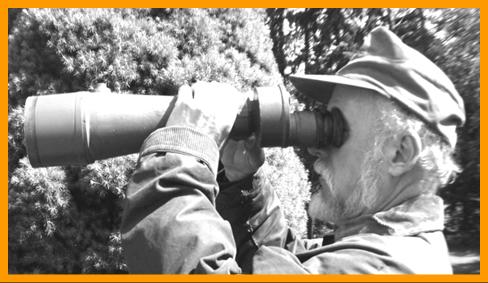
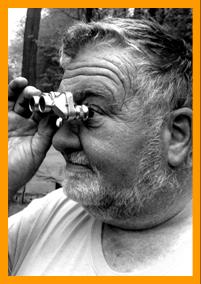
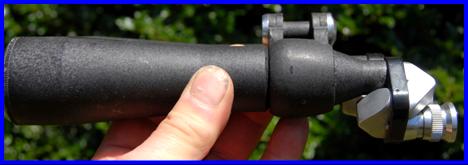
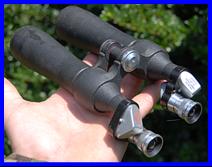
|
The United Falcon 20x40 (20 x magnification) binoculars have an extended objective tube of around 125.7 mm |
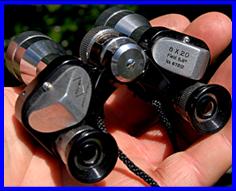



|
By comparison United 10x20 (10x magnification) binoculars have an objective tube length of around 40 mm |
|
Dollonds 8x20 (8x magnification) binoculars have an objective tube length of around 38 mm |



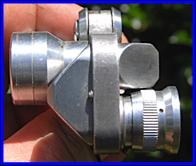
|
United 7x18 (7x magnification) binoculars have an objective tube length of around 25.5 mm |
|
Fata Morgana 4x12 (4x magnification) binoculars have an objective tube length of around 14.4 mm, one of the shorter objective tube lengths |
|
Telescopes, Spotting Scopes, and Monoculars of a Similar Design to the Miniature Binoculars. Teleskope, Spektive und Monokulare Ähnlicher Bauart wie die Miniaturferngläser. Té.lescopes, Longues-vues et Monoculaires d'un Design Similaire à Celui des Jumelles Miniatures. телескопы, прицельные прицелы и монокуляры аналогичного дизайна для миниатюрного бинокля. 望遠鏡、 スポッティングスコープ、ミニチュア双眼鏡と同様の設計の単眼鏡. T eleskop, Spottskalor och Monokulor av liknande Design till Minikikaren. Telescopios y Monoculares de Diseño Similar a los Binoculares en Miniature. Telescopi, Cannocchiali e Monocoli di un Design Simile al Binocolo in Miniature. |
|
The components used in the Japanese reverse external poro prism miniature binoculars were suitable for use in compact spotting scopes, telescopes, and monoculars, and various scopes and monoculars appeared under a variety of brand names in various markets around the world at around the same time as the binoculars. |


|
Greenkat 30x60 telescope or spotting scope missing tripod yoke.( UK market). Collection Mark Ohno |
|
38 mm |
|
40 mm |
|
125.7 mm |
|
25.5 mm |


|
Mayflower 6x15 monocular distributed in the USA by Colonial Optical Co of Englewood California, with JB 231 manufacturer code indicating manufacture by Tochihara Optical Co of Japan, a prolific contract manufacturer. Collection of Mark Ohno |

|
Palley Hy Power 20x40 spotting scope or telescope with yoke (USA market). Collection Mark Ohno |
|
Tasco NFL licensed 8x20 binoculars Collection of Mark Ohno |





|
What is the Value of Specific Miniature Binoculars? Was ist der Wert der Spezifischen Minifernglas? Quelle est la Valeur de Miniature Spécifique Jumelles? ミニチュア双眼鏡の特定のペア の値は何ですか? Какова величина удельного Миниатюрные Бинокль? Vad är Värdet av Specifik Miniature Kikare?¿Cuál es el Valor de Específico Prismáticos Miniatura? Qual è il Valore Dei Binocoli Specifici in Miniatura? |
|
I get asked about this frequently. I won’t normally estimate values. Miniature binoculars are worth what someone is actually willing to pay you for them at a particular point in time, and place, for whatever reason. I like low start competitive auctions to determine a real value. Demand and supply and perception and selling region and condition are factors, but actual rarity not so much. I have paid a relative pittance for some of the rarest binoculars at auction because nobody bid against me and or desired them (lack of demand). And there are so many nonsense “rare” descriptions attached to fairly common things that actually rare or obscure items or brands often generate minimal interest or value. My perspective is that vintage miniature binoculars are normally bought by people wishing to use them, and/ or for personal reasons such as wanted one as a younger person but couldn’t afford them or friend has one; and/or for their novelty or show off value; and/or because someone likes the recent production new Nikon Mikron 6x15 or 7x15 binoculars but not the fairly high price of those. So full functionality is important. Conversely, I believe that few miniature binoculars are purchased for purposes of collecting, as I have only ever heard from, or am aware of, a very small handful of other collectors making any effort to collect any quantity of these. So the plentiful miniature models of really common importer brands produced in comparatively large quantities that most people have heard people of (Bushnell, Selsi, Binolux, Swift, Tasco ) probably have more demand than uncommon or obscure brands. I used to tell people to watch auction end results of items started low on auction sites like Ebay ® as a method of determining actual demand and real world value. As Ebay ® changed to strongly discourage auctions in favor of a “buy it now or offer” site business model, for collectables that became a largely stagnant pool of collectables priced well above what anyone would pay in a competitive auction, and with a very high percentage of that stuff never selling (Like all those common Binolux, Selsi, Bushnell, Swift and Tasco miniature binoculars worth around $25 or $30 at most listed at $125 or whatever delusional price). I’ve watched one pair of miniature binoculars of a brand I wanted but priced at around four times their worth get re-listed for well over six years and still counting. So looking at on-line miniature binoculars “buy it now” asking prices is mostly an indicator of what nobody is willing to pay, since those priced right and with credible full functionality just sell quickly and disappear. And of course the overpriced asking prices just influence other sellers to do the same, and at the same time it discourages collectors from continuing to bother to look very often. My option on value (what people will pay) is based on having been the HIGH BIDDER in COMPETITIVE BIDDING on 900 or so pairs of miniature binoculars with bids of UNDER $30 + shipping in the past 6 or 7 years, and of a huge range of brands for the collection, and from auction sites all over the world. So I think that this is probably a pretty good real world demonstration that $25-$30 or so is around the real market value of most functional miniature binoculars. Sure there are a few miniature brands that may get a bit more as being a premium brand (Nikon, Pentax), or in circumstances that increase value (such as being like-new and/or with original retail box), and a few markets (like Germany that have always had higher optical goods prices). Conversely my opinion that binoculars that are beat up, corroded, missing eyepieces, with collimation issues (double vision), cracked prisms, dirty inside, or frozen adjustments are worth maybe $10-$15, if that. I may not care all that much about defects, as I can fix them, and/or I just wanted spare parts. From huge experience for buyers I have a cynical pessimism of miniature binocular functionality and listing transparency. If you are a buyer you probably want to see a lot of non ambiguous specific condition statement claims like “clear lenses”, “no double vision”, “focus freely”, “work great”, “function like new”, etc. Statements like “may need some cleaning” should be read as “internal lens surfaces probably too dirty to be usable without a skill based servicing which if you have to pay for will be many times more than the resulting binoculars will be worth. Likewise I view vague and incomplete descriptions limited to “used” or “previously owned” with no additional statement addressing functional condition as usually being a red flag of known issues like double vision, dirty lenses and prisms, cracked or loose prisms, seized focusing mechanisms/ oculars, or free spinning ocular rings. I think there are so few collectors of these because the vast majority arrive with some functionality problem: I’ve done some sort of repair on the vast majority of the ones in the collection, and to the degree that when one arrives needing nothing I am a little surprised. |
|
Keeping Track of Miniature Binoculars? Nachverfolgen von Miniaturferngläsern? Отслеживание миниатюрных биноклей? ミニチュア双眼鏡の追跡? Håller koll på miniatyrkikay listed lyre? ¿Mantener un registro de binoculares en miniatura? Tenere traccia del binocolo in miniatura? |
|
When a collector has accumulated a really large number of whatever item they collect, it becomes hard (and then impossible) to remember exactly what variations you have or don’t have, compounded by the number of ones offered for sale that you look at. This results in purchasing items that turn out to be duplications, which makes you feel foolish. Sometimes you see collectors pouring through paper lists of what they have or need, or looking on tablet or computer lists. Somebody asked how I keep track? I don’t know any other collectors who do it exactly the same way that I do. I just go on line to this website and look at the listing of what I have ( X marked) on my lists of known binoculars of this type (the six BINOCULARS BY BRAND scroll down pages). I don’t think it so odd to do this by website, but other people seem to think it is strange or funny. |

|
Paws, Jaws, Claws and Miniature Binoculars . Pfoten, Klauen, Krallen und Miniaturferngläser. Pattes, Mâchoires, Griffes et Jumelles Miniatures. Лапы, челюсти, когти и миниатюрные бинокли. 足、顎、爪 およびミニ双眼鏡 . Tassar, Käkar, Klor och Minikikare. Patas, Mandíbulas, Garras y Binoculares en Miniature. Zampe, Mascelle, Artigli e Binocoli in Miniature. |

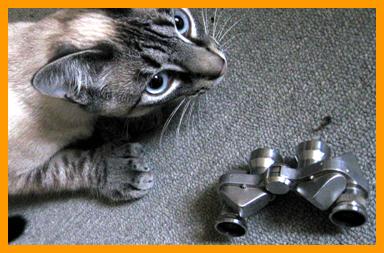









|
In doing research for this website I have come across some other binocular oriented websites that I enjoyed, appreciated, and which I would like to recommend. They generally address vintage larger binoculars than this site does, and/or other optics topics, and they reflect an altruistic and time consuming effort to share a researched knowledge and a love of the topic with a wider public audience, which benefits everybody. Listed in no particular order, they are as follows. (you will have to copy and paste the web address). VINTAGE MONOCULAR PHOTOS (ULRICH ZEUN): http://www.monocular.info NIPPON KOGAKU MIKRON (NICO WESTPHAL and HANS BRAAKHUIS):http://www.box.com/shared/1ax0zo2dk1 EXTENSIVELY RESEARCHED BINOCULAR HISTORY OF NIPPON KOGAKU & NIKON (HANS BRAAKHUIS): http://www.hansbraakhuis.nl/history%20Nippon%20Kogaku%20Nikon.pdf VINTAGE BINOCULAR PHOTOS (TED BRINK): http://tedbrink.webs.com/usa.htm VINTAGE BINOCULARS WITH DETAILED HISTORICAL DATA & PHOTOS (ANNA & TERRY VACANI): http://www.binoculars-cinecollectors.com/ VINTAGE BINOCULAR PHOTOS (GARY HAWKINS):http://www.pbase.com/g_hawkins/binocular_pictures&page=all VINTAGE BINOCULAR PHOTOS (SIMON SPIERS):http://flickeflu.com/photos/29616687@N05 VINTAGE BINOCULAR PHOTOS (FRANK FLAGORIO):http://www.flickr.com/photos/binocwpg/sets/72157623234405689/detail/ VINTAGE JAPANESE OPTICAL CO DATA (CAMERAPEDIA ON WIKIA), 5,000+ pages of info, camera specific, but some overlap to binoculars makers: http://www.http://camerapedia.wikia.com OPTICAL FUNGUS (RICHARD J KINCH) http://www.truetex.com/lens_fungus.htm WELL DOCUMENTED BINOCULARS COLLECTION WITH DETAILED ANALYSIS (BRAYERBROOK OBSERVATORY/ C.J.R.LORD http://www.brayebrookobservatory.org/BrayObsWebSite/HOMEPAGE/BINOCOLL.html WIDE RANGE OF OPTICAL ARTICLES ON TELESCOPES AND BINOCULARS AND SOME REFERENCE CATALOGS COMPANY 7: a commercial optical firm, but offering library/ research resources as a public service. OPTREP UK commercial binocular repair outfit, but interesting binoculars shown)http://www.opticalrepairs.com
|
|
I RECOMMEND THESE WEB SITES ABOUT BINOCULARS. Andere gute Website auf Ferngläsern. D'autres Bons Sites Web sur des Jumelles. Бинокли веб-сайтов я P екомендую. 私 は双眼鏡については、これらの Web サイトをお勧めします。 JAG Rekommenderar Dessa Webbplatser om Kikare. Recomiendo Estos Sitios Web en Prismáticos. Raccomando Questi Siti di Binocolo. |

|
United Binocular Company 20x40 spotting scope or telescope with yoke (USA market). Collection Mark Ohno |
|
Sans & Streiffe 20x40 spotting scope or telescope with yoke (USA market) Collection Mark Ohno |



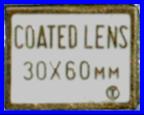


|
Herter’s 30x60 spotting scope or telescope with yoke and tripod (USA market) Collection Mark Ohno. This scope came in it’s original box with original 1966 purchase receipt. For many years Herter’s was a premier retail and mail order outdoor and hunting outfitter in Waseca Minnesota . In n the 1960’s they created an ancillary sales entity “Ruhr-American Corp in Glenwood Minnesota (USA), and a sportsman in Northrop Maine bought this from them for $13.95 along with a dozen cartridge reloading related tools. Herter’s retail operations went bankrupt in 1981, but the famous brand name is still active. |
|
30x60 was probably the largest of this miniature binoculars pattern of spotting scope, and these Herter’s branded scopes are desirable today. |
|
Sans & Streiffe was a Chicago Illinois (USA) based optical importer and distributor documented active from 1951 until around 1973. |
|
BINOCULARS RESEARCH WEBSITE, NOT FOR PROFIT. FERNGLAS-FORSCHUNGS-WEBSITE, NICHT GEWINNORIENTIERT. |


|
Another Pair of Miniature Binoculars with an Interesting History. Ein weiteres Miniatur-Fernglas mit einer interessanten Geschichte. Une Autre Paire de Jumelles Miniatures Avec une Histoire Intéressante. 興味深 い歴史を持つもう 1 組 のミニチュア双眼鏡。 Еще одна пара миниатюрных биноклей с интересной историей. Otro par de binoculares en miniatura con una historia interesante. . Un altro paio di binocoli in miniatura con una storia interessante. |
|
I do like binoculars with a provenance or documented history that ties person to object and gives a human dimension to the binoculars. Not that they make up more than 0.5% of my 1,400 binoculars. But they add a dimension of interest beyond the sterile object, and offer a glimpse into the role they likely played in the owner’s life. My AOCO/ Asahi Optical made Bushnell Broadfield” (wide angle) 6x25 binoculars are well marked as having belonged to Jack Curnow of the Los Angeles Times newspaper. Jack Curnow was the Outdoor and Sports editor for the Los Angeles times from around 1940-1960, and he filed stories on topics such as hunting, fishing, golf, football, tennis, and boat and auto racing. Based on past experience, the engraved markings were made by a jeweler, and suggest the binoculars were a gift from someone like a spouse, and the additional label maker name & Los Angles Times label indicates on job use by a reporter covering visual events in the 1950’s. |







|
Jack Curnow in 1959 |
|
My Bidding Secret ! Mein Gebotsgeheimnis ! Mon secret d'enchères ! ¡Mi secreto de licitación! Il mio segreto di offerta! |
|
Obviously I’ve acquired most of my 1,400 or so binoculars by competitive bidding on Ebay ® , (plus thousands of other items). While Ebay ® has been transitioning from being an E-flea market of casual sellers selling one off collectable items into being more of a fixed price and new product E-commerce marketplace, it is still an OK place to get collectable oddities. I attribute my quite high bid success rate and attribute getting the most effective bid win costs to the bid sniper (last seconds bid) program Gixen (https://www.gixen.com/index.php). I don’t endorse things very often, and get absolutely nothing from doing it, but I do endorse Gixen. The basic program works fine and is free, but I prefer the deluxe double bid mirror program that has a nominal subscription cost. I am impressed by Gixen’s software operator Mario (how often can you have an email conversation with the key figure at a software co when you want ???). Anyway, if you investigate and like what you see, tell Mario that Mark from miniaturebinoculars.com recommended Gixen as a thanks for the program getting him many many thousands of interesting items at a far lower cost than would have happened by running prices up by throwing progressive bids at these auctions. |
|
Thoughts on Memory. And Music. Gedanken zum Gedächtnis. Und Musik. |
|
All aspects of creating this website depends on memory: computer hard disks, camera SD Cards and flash sticks. As you can see from what was easy to grab for my photo, I’ve used a lot... almost all Sandisk ® brand, and my impression is the cards and flash sticks have worked well. On the other hand, I’ve gone through a around 14 Sandisk ® clip MP3 music players and my impression is they lock up or malfunction for no good reason and seldom give me a satisfactory length of service, and I have absolutely nothing good to say about my negative warranty replacement experiences or the substitute replacements offered. My recent warranty replacement for a dud Sandisk ® clip that had locked up only lasted for 2 uses before that dud replacement also locked up. To me that is bad product. If anybody has experience with a more reliable brand small MP3 player... let me know??? |



|
If somebody has a zoo or rehab of really exotic animals (eagles, lions, monkeys and such) they might be willing to pose with miniature binoculars contact me at: miniature.binoculars@gmail.com |
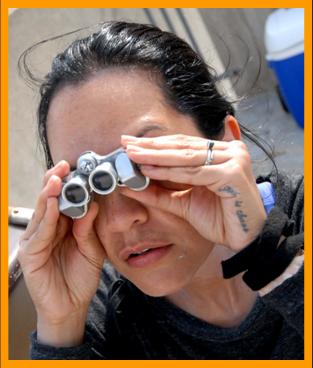
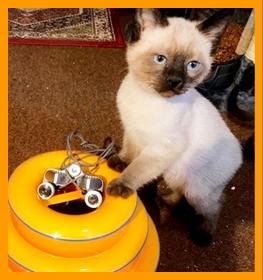

|
In the 1950’s jewelers often sold these binoculars as a gift item. |

|
1958 newspaper car racing article by Jack Curnow |
|
Jack Curnow died in 1976, and in the way of such things, a family member quickly took and disposed of his accumulated personal possessions. I was contacted by a grandson 48 years after his death, who saw this section of the website... |
![Text Box: CLICK ON PAGE LINE. CLIQUEZ SUR LA LIGNE DE PAGE. KLICKEN SIE AUF SEITENZEILE. HAGA CLIC EN LÍNEA DE PÁGINA..[ページ行]をクリックします。НАЖМИТЕ НА СТРОКУ СТРАНИЦЫ. ALSO SEE INDEX.](image676.gif)

